
Posts Tagged: ticks
Bohart Museum Open House: Learn About Mosquitoes, Ticks, Bed Bugs, Lice, and Fleas
You won't want to miss the Bohart Museum of Entomology open house on "Household...
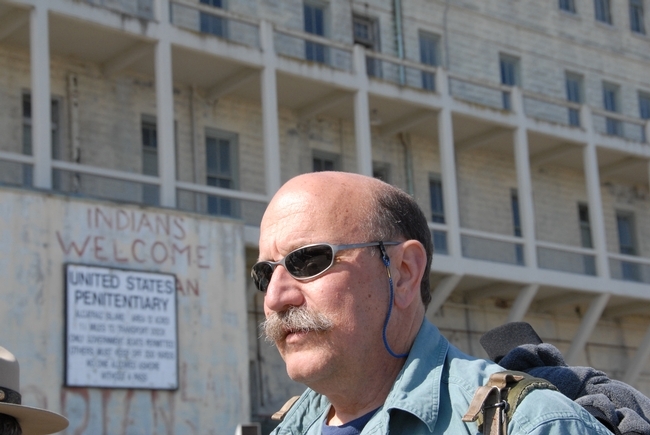
UC Davis forensic entomologist Robert Kimsey at Alcatraz where he has done insect research. (Photo by Kathy Keatley Garvey)
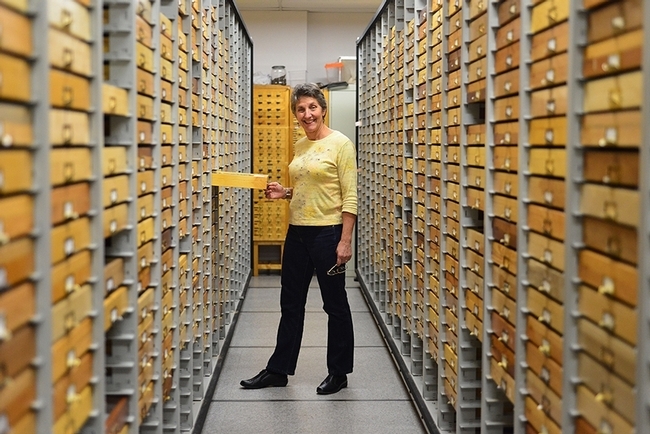
UC Davis distinguished professor Lynn Kimsey directs the Bohart Museum of Entomology. (Photo by Kathy Keatley Garvey)
Bohart Museum of Entomology: All That Glitters Is Not Gold...
All that glitters is not gold...think insects! When the Bohart Museum of...
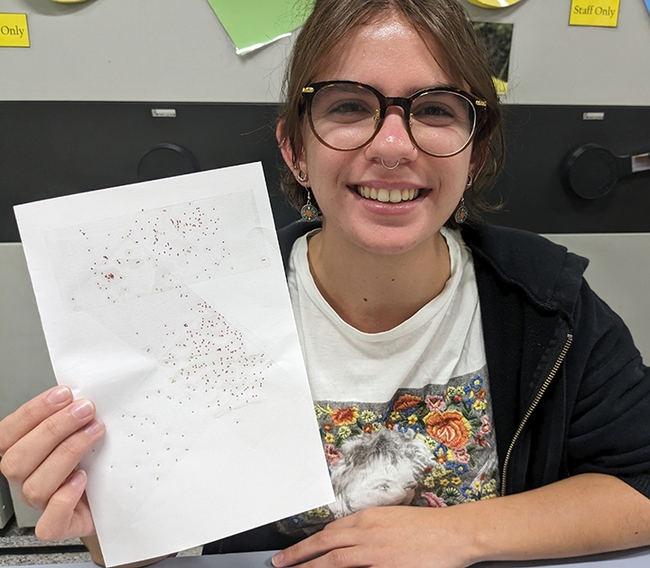
Hanna Briggs, a UC Davis transfer student, holds a sample card showing how glitter mimics insects. She is an intern in the laboratory of arachnologist Jason Bond, the Schlinger Endowed Chair, UC Davis Department of Entomology and Nematology, and associate dean, College of Agricultural and Environmental Sciences.
Ticks and Lyme Disease
In honor of Lyme Disease Awareness Month and in response to some misinformation about ticks on...
It Started Out as a Quiet, End-of-the-Year Hike Near Lake Berryessa...
It was a good day for a hike. So Joe Nazarius of Winters embarked on a Dec. 30th...
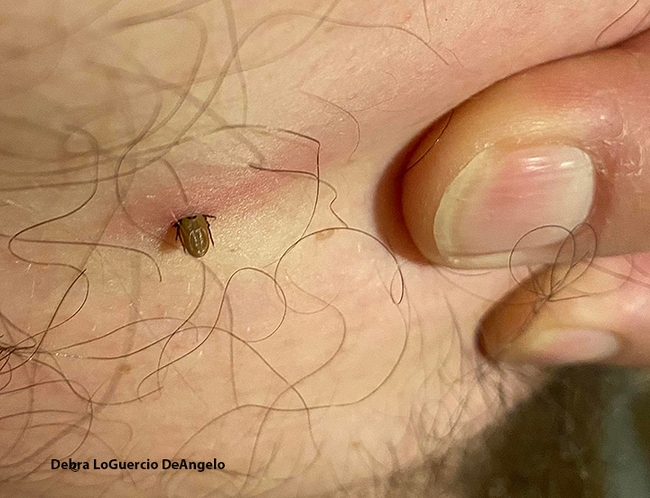
This is the tick buried in the skin of Winters' resident Joe Nazarius. It's black-legged nymph tick, Ixodes pacificus, as identified by Lynn Kimsey, director of the Bohart Museum of Entomology and a UC Davis distinguished professor of entomology. (Photo by Debra LoGuercio DeAngelo)
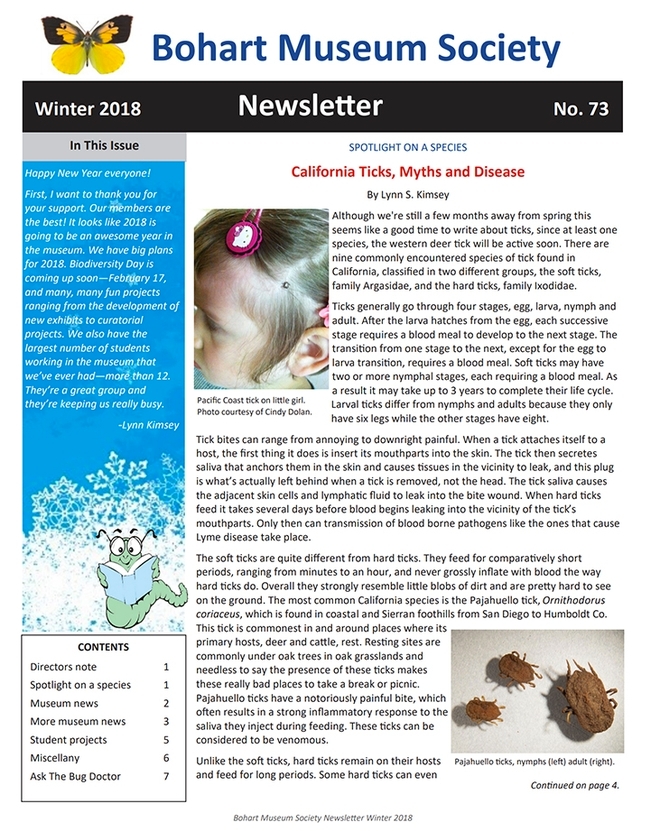
First page of information on ticks, Bohart Museum newsletter, Winter 2018
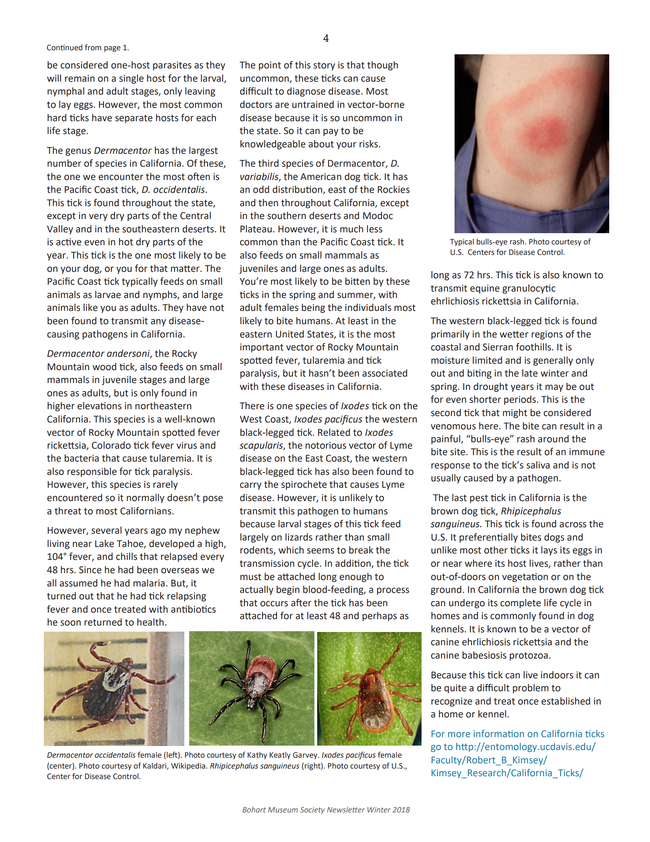
Second of two pages of information on ticks, Bohart Museum newsletter, Winter 2018
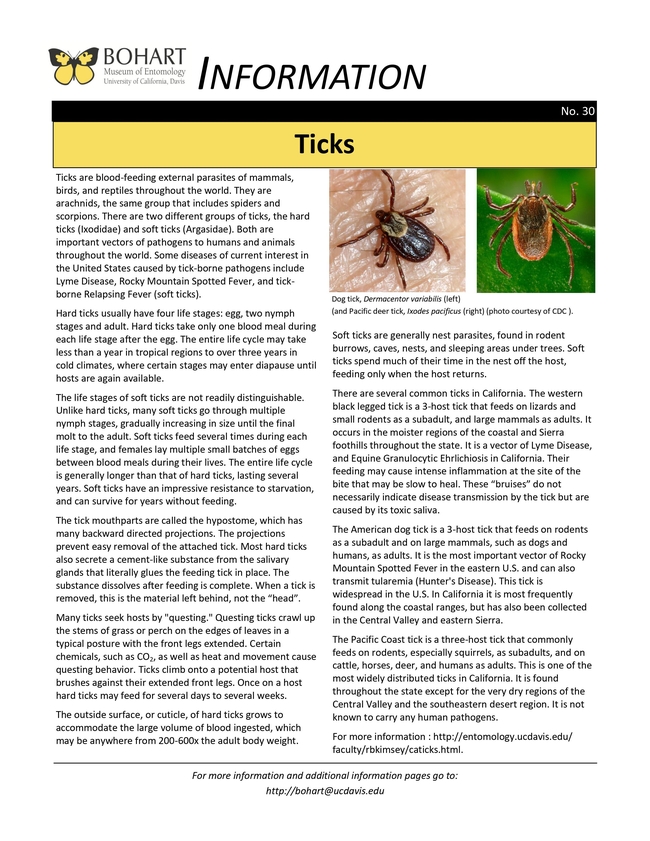
Fact sheet on ticks, written by Lynn Kimsey, director of the Bohart Museum of Entomology
Those Amazing Ticks: And How Hungry Ticks Work Harder to Find You
They ticked me off. Ticks can do that to you. I never think about ticks during the holiday...
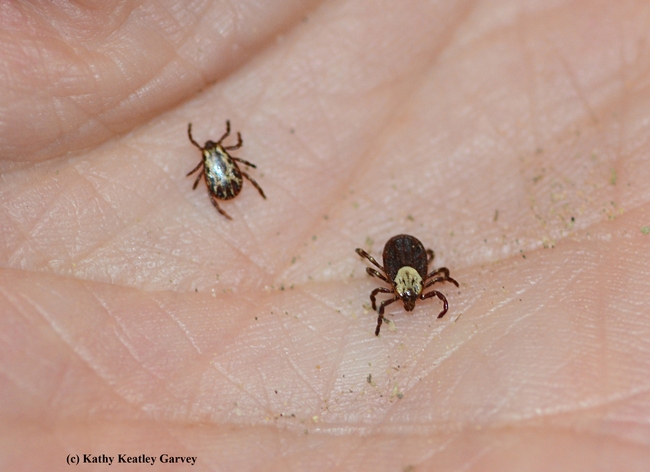
Two Dermacentor occidentalis (Pacific Coast ticks) "collected" during a Sonoma outing: male on the left and female on right, as identified by Lynn Kimsey, director of the Bohart Museum of Entomology. They are about the size of a sesame seed. (Photo by Kathy Keatley Garvey)
